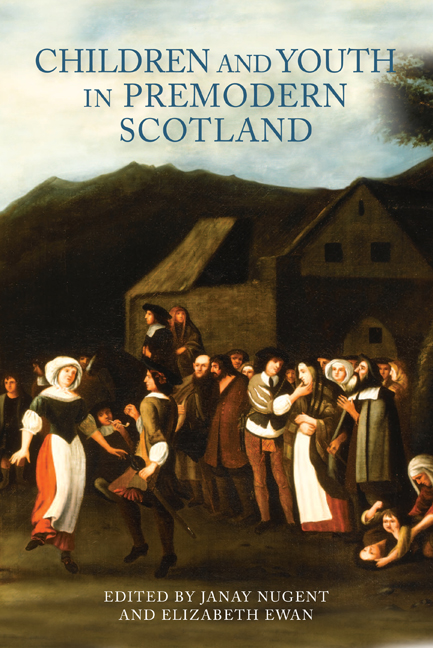Book contents
- Frontmatter
- Dedication
- Contents
- List of Illustrations
- Notes on Contributors
- Acknowledgments
- Abbreviations and Conventions
- Introduction: Adding Age and Generation as a Category of Historical Analysis
- Part I Experiences of Childhood and Youth
- Part II Representations of the Young
- Part III Constructing the Next Generation
- Envoi In Their Own Words: A Mother to Her Son
- Guide to Further Reading
- Index
- St Andrew Studies in Scottish History
7 - Slave Children: Scotland’s Children as Chattels at Home and Abroad in the Eighteenth Century
Published online by Cambridge University Press: 11 May 2021
- Frontmatter
- Dedication
- Contents
- List of Illustrations
- Notes on Contributors
- Acknowledgments
- Abbreviations and Conventions
- Introduction: Adding Age and Generation as a Category of Historical Analysis
- Part I Experiences of Childhood and Youth
- Part II Representations of the Young
- Part III Constructing the Next Generation
- Envoi In Their Own Words: A Mother to Her Son
- Guide to Further Reading
- Index
- St Andrew Studies in Scottish History
Summary
In a portrait painted by Sir John Baptiste de Medina, James Drummond, 2nd titular duke of Perth (1673–1720), Jacobite, stands proudly looking straight into the eyes of the viewer (Plate 7.1). Immediately behind Drummond's right hand, which rests on his helmet, the light catches on a metal collar encircling a child's neck. A young black boy, a nameless chattel, stares up at this figure of Scottish nobility. The child is characterized by his dark skin, and what Joseph Leo Koerner might describe as ‘his eccentric placement’ oblique to the main focus on Drummond. Within the frame, the boy is simultaneously ‘more visible than others through his stand-out difference’, but the dark background from which he emerges renders him ‘less visible’ to the gaze, which is drawn back to Dummond. This visible and yet invisible presence acts as a metaphor for the place of slave children in Scottish history, for he is an object in the painting rather than the subject of the portrait.
At its most simplistic level, Drummond's portrait depicts the young slave boy in unambiguous terms, for his silver collar, while ornamental, is also the symbol of his slave status, as well as a preventative measure inhibiting escape. This painting of a domestic slave is, in David Bindman's conception, ‘an exercise of rank’. Within British art of this period, enslaved ‘black grooms and pages were among the many signifiers of rank that could be invoked by painters to suggest that old values would survive, or had survived civil conflict’. Painted at the turn of the eighteenth century, after Drummond's return to Scotland from the Continent, this nameless domestic slave child is both the property of his owner, and, as is typical of eighteenth-century portraiture in Scotland, also a symbol of rank, fashion and status. Furthermore, in an age of increasing social mobility caused by the economic expansion into new-world markets in the American colonies and the Caribbean, old-order forms of rank could be mimicked and replaced by the inordinate wealth of the growing merchant class. In the Scotland of the eighteenth century, therefore, slaves were also traded and purchased by merchants, for whom these slave children and youths could reflect ‘the exotic world beyond Europe, now open to trade and imperial adventures’.
- Type
- Chapter
- Information
- Children and Youth in Premodern Scotland , pp. 120 - 135Publisher: Boydell & BrewerPrint publication year: 2015



